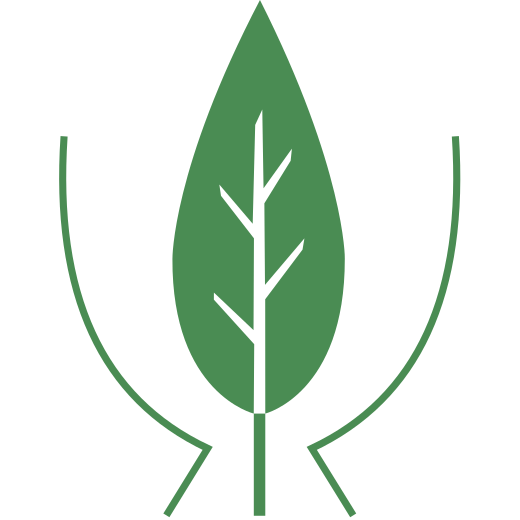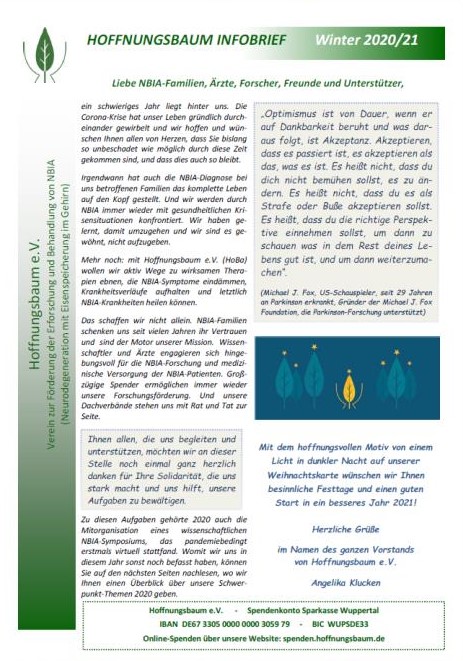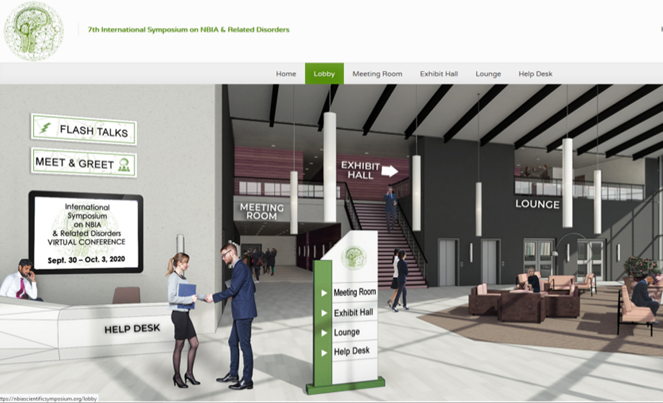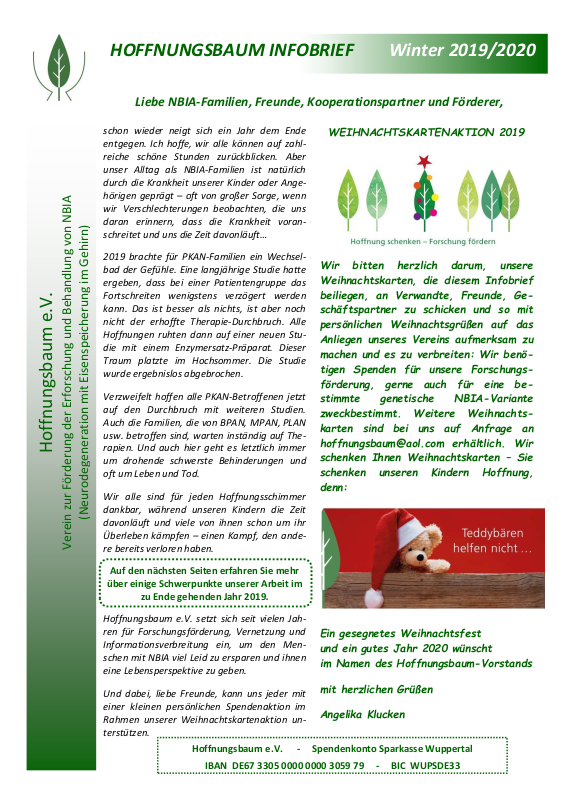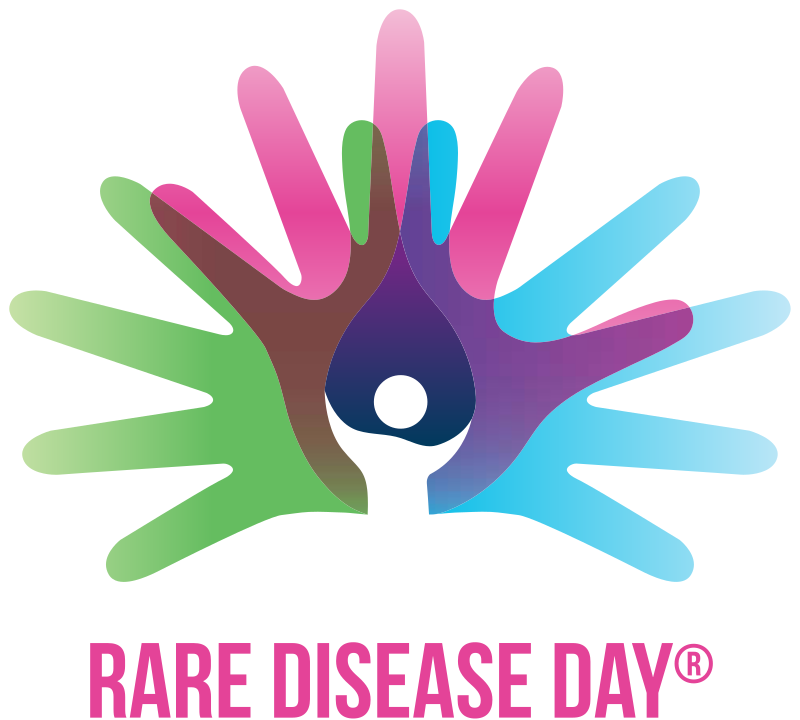Review of TIRCON and its significance for NBIA research and care
Review of TIRCON and its significance for NBIA research and care
A retrospective article on TIRCON (Treat Iron-Related Childhood-Onset Neurodegeneration) has now been published in the journal "Frontiers in Neurology" on the subject of "Networks for movement disorders". TIRCON was an international NBIA research project funded by the European Union in the 7th Research Framework Program (FP7) from 2011 to 2015. 13 research institutions, clinical centers, industrial companies and patient organizations from 8 countries worked together as part of a consortium with the aim of advancing research in the field of NBIA and improving clinical care. Hoffnungsbaum e.V. was a partner in the TIRCON consortium and responsible for public relations / information provision.
TIRCON, coordinated by the Friedrich Baur Institute at the University Hospital of the Ludwig Maximilian University in Munich, comprised 8 areas of work. The core projects were the international multicenter clinical trial with the iron chelator deferiprone in PKAN as well as the global patient registry and the biobank.
After the end of EU funding, the research and care infrastructure established in TIRCON was consolidated and expanded thanks to financial support from industry and NBIA patient organizations. The NBIA patient registry now includes data from more than 400 NBIA patients. TIRCON also continues to exist as a network beyond the EU funding and has now also been able to attract external clinical centers to participate.
TIRCON can be seen as an exemplary international network for an extremely rare neurological disease group and has directly or indirectly shaped the current research and care landscape for NBIA diseases in many countries, not least through close cooperation with the NBIA patient community, which has led to the establishment of new NBIA patient organizations in several countries.
If you would like to find out more about TIRCON, go to: TIRCON. The full original article was published in the current issue of "Frontiers in Neurology":
"Treat Iron-Related Childhood-Onset Neurodegeneration (TIRCON) - An International Network on Care and Research for Patients With Neurodegeneration With Brain Iron Accumulation (NBIA)"
Project Coordinator
Friedrich Baur Institute at the University Hospital
Ludwig-Maximilians-Universität in Munich
